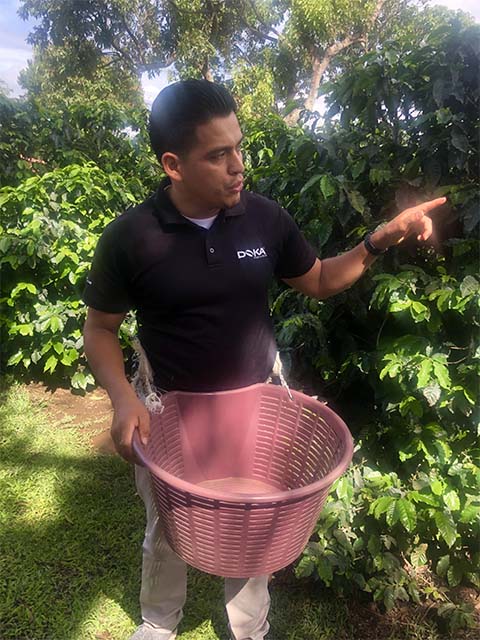Lucy Allan, Bilingual Bridges’ Marketing Assistant, is a senior at Butler University in Indianapolis, IN. She is majoring in Elementary Education and Peace & Conflict Studies, and minoring in Spanish and Mild Intervention. From May 12 – June 1, 2019, Allan participated in Butler’s Spanish Immersion trip to Costa Rica. Part of this trip entailed learning Spanish through language classes at the ILISA Language School in San José, which she describes below as her first of a series of travel stories!
 Saturday, we started our day at Doka Estate, Costa Rica’s largest coffee plantation.
Saturday, we started our day at Doka Estate, Costa Rica’s largest coffee plantation.
There, we learned about each step of the coffee production process; however, I found the first step (picking coffee cherries) to be the most significant because of the working conditions that surrounded the process.
At Doka Estate, the overall coffee production process begins at 6am, with workers strapping circular, pale, pink baskets around their waists to hold cherries. Until 4pm, they peel back and pull down heavy branches to reach far away cherries, and recheck trees they picked from earlier in the week for new cherries.
Reynoldo, our tour guide, acknowledged that picking is far from easy for more reasons than we were witnessing.
“It doesn’t matter if it’s rainy or sunny, or if the bugs are bothering you… You have to keep going,” he said. “In [the coffee trees], you might find snakes, bees, ants, spiders… but you have to keep going.”
Compensation is another issue. Workers receive $2 per basket (28 pounds) and need to fill 8-10 baskets a day to make a living. As a result of these conditions, though, Costa Ricans typically do not want to work on coffee plantations. About 80% of the estate’s 200 workers are from Nicaragua.
(The perks? Well, Doka Estate also provides its workers with free “housing, electricity, and water – and all the coffee you can drink.”)
As someone who has never liked coffee, I tend to not think about it too much, but touring Doka Estate changed that for me. While it was fun to learn about the coffee production process, I now am able to see how a product that many take for granted can be so harmful to the people involved in producing it. I will definitely keep that in mind when making purchases in the future.
We continued our day trip excursions to the Poás Volcano and La Paz Waterfall Gardens Nature Park.
Author & Photo Credits: Lucy Allan



